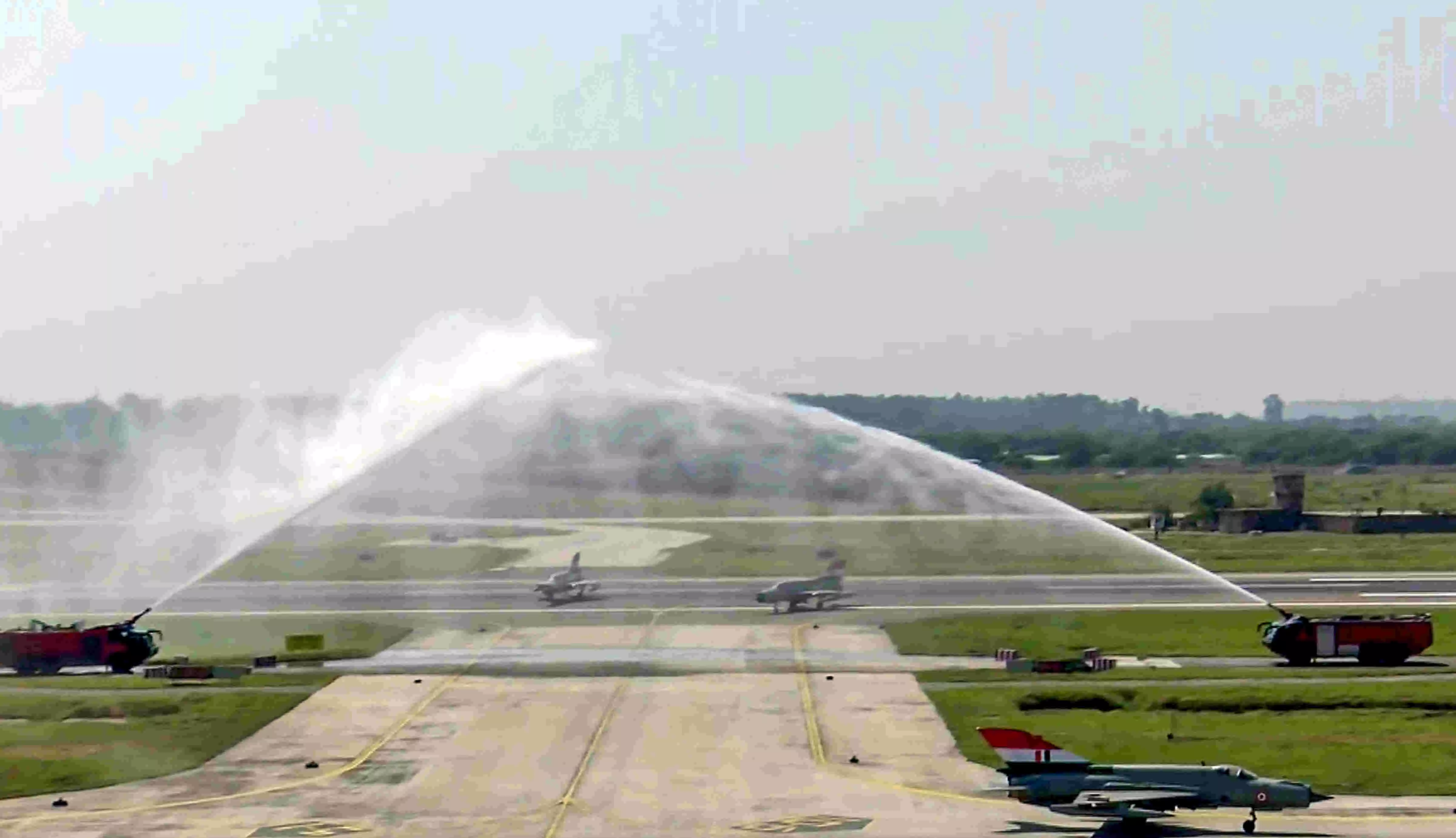MiG-21 flies through Indian skies for last time, Rajnath terms it 'national pride'

Chandigarh: The legendary Mikoyan-Gurevich MiG-21 fighter jets, the the backbone of the Indian Air Force's combat fleet for more than six decades, streaked through Indian skies for the last time on Friday -- its final adieu threaded through history and many a remembrance. The sun shone bright, the skies were cloudless and a brilliant blue, providing a picture perfect setting for the elaborate farewell to the Russian origin warhorse that was inducted into the IAF in the 1960s. Describing the MiG-21 as a mighty machine and a national pride, Defence Minister Rajnath Singh said there is deep attachment to the aircraft that shaped our confidence. "MiG-21 is not only an aircraft or machine but also proof of deep India-Russia ties," the minister said. "The history of military aviation is incredible. The MiG 21 added many proud moments in our military aviation journey," Singh told the gathering. There has been no fighter jet in the history of global military aviation made in such big numbers, the minister said. More than 11,500 MiG 21 aircraft were made. Of them, 850 fighter jets remained part of the IAF, he added. "This number is the testimony of this aircraft's popularity, credibility and multi-dimensional capability," Singh said while pointing out that its contribution was not been limited to one incident or a war. He also recalled its role in the 1971 war with Pakistan, the 1999 Kargil conflict as well as the 2019 Balakot air strikes. Besides him, former IAF chiefs A Y Tipnis, S P Tyagi and B S Dhanoa, Group Captain Shubhanshu Shukla, India's first man on the International Space Station, and scores of veterans, many who had piloted the aircraft, were present on the occasion.
Air Chief Marshal A P Singh flew the sortie of the MiG-21 Bison aircraft with call sign Badal 3. Dilbagh Singh, who became the IAF chief in 1981, led the first MiG-21 Squadron here in 1963. The culmination of MiG-21 operations took place with a ceremonial flypast and decommissioning event, marking the closure of a historic chapter in India's air power. The country's first supersonic fighter and interceptor aircraft were retired at the decommissioning event in Chandigarh, where it was first inducted. The ceremony began with the arrival of the minister, the chief guest at the occasion, followed by a spectacular display by IAF's elite skydiving team 'Akash Ganga', which skydived from a height of 8,000 feet. This was followed by a majestic flypast of the MiG-21 aircraft accompanied by precision of the air warrior drill team and an aerial salute. The fighter pilots flew MiG-21s in the three-aircraft Badal formation and the four-aircraft Panther formation roared over the skies one final time. The Surya Kiran aerobatic team also enthralled the audience with their breathtaking manoeuvres. MiG-21 jets, belonging to number 23 Squadron, took part in the flypast ceremony, and were given a water cannon salute. The Jaguar and the Tejas aircrafts also took part in the ceremony. Tejas is a single-engine multi-role fighter aircraft capable of operating in high-threat air environments. It has been designed to undertake air defence, maritime reconnaissance and strike roles. After its first induction, the IAF procured over 870 MiG-21s to boost its overall combat prowess. The aircraft has also had a troubled safety record and involved in multiple crashes in the last six decades. The ageing fleet prompted some to describe the aircraft as "legacy coffins". The MiG-21 jets made their last operational flights at the Nal Air Force Station in Rajasthan's Bikaner, a month ahead of the formal retirement ceremony. As part of the symbolic farewell, Air Chief Marshal Singh had also flown solo sorties of the MiG-21 from Nal on August 18-19.



